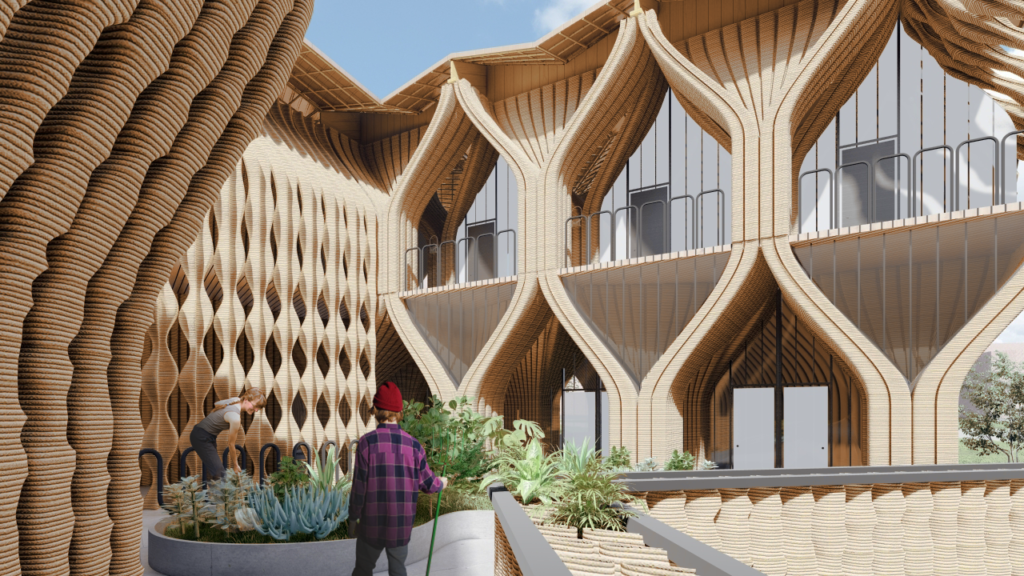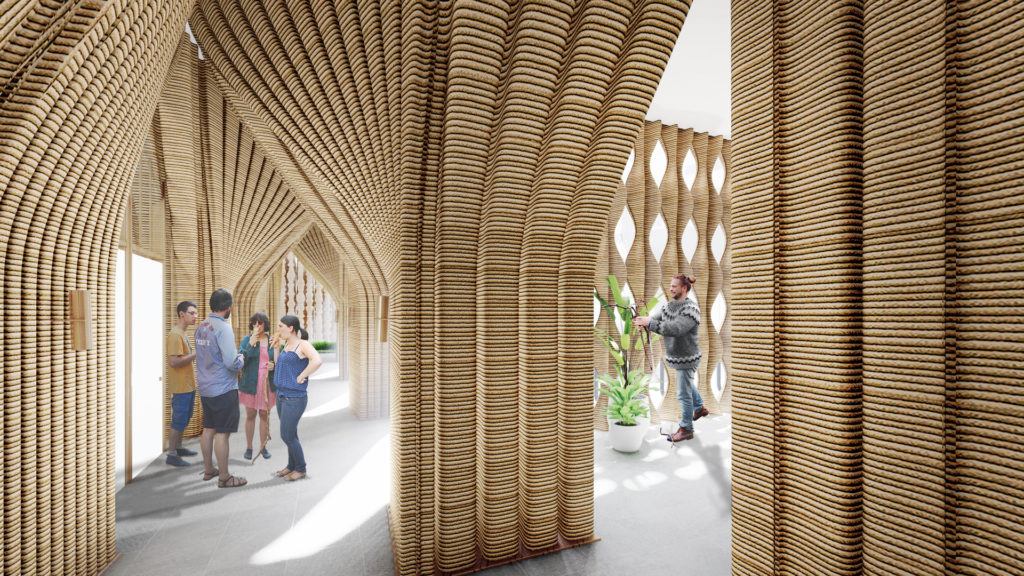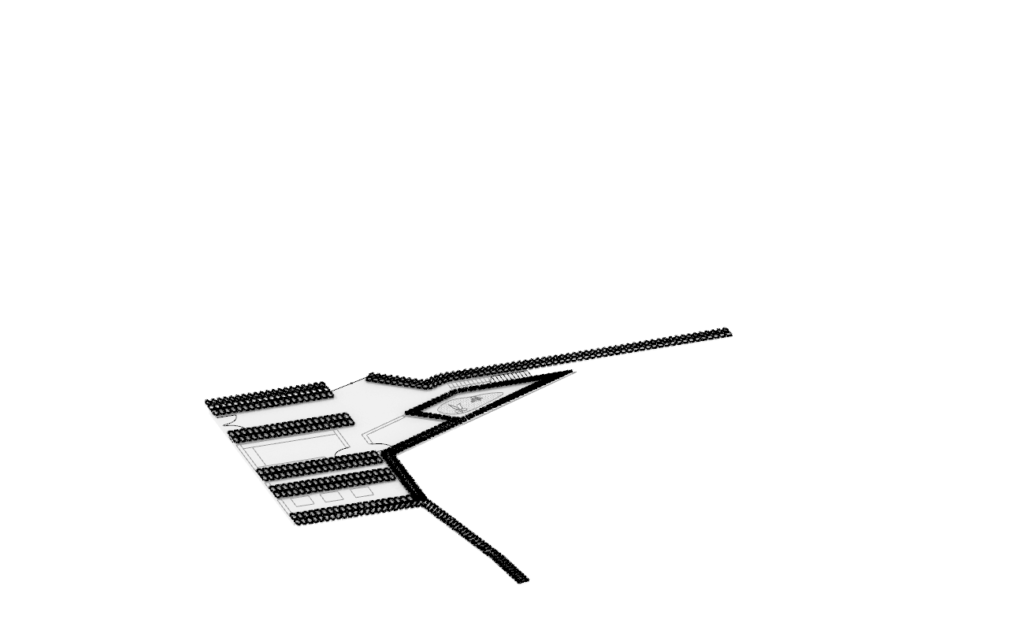The brief asked for the design of a student housing facility in Barcelona, that would be 3D printed out of earth material. A previously studied module considered as a stand-alone pavilion was adapted, varied and proliferated in order to scale up the structure.
Location

Given the context of Barcelona and the required function for the building, a site was chosen to be close to higher education facilities.
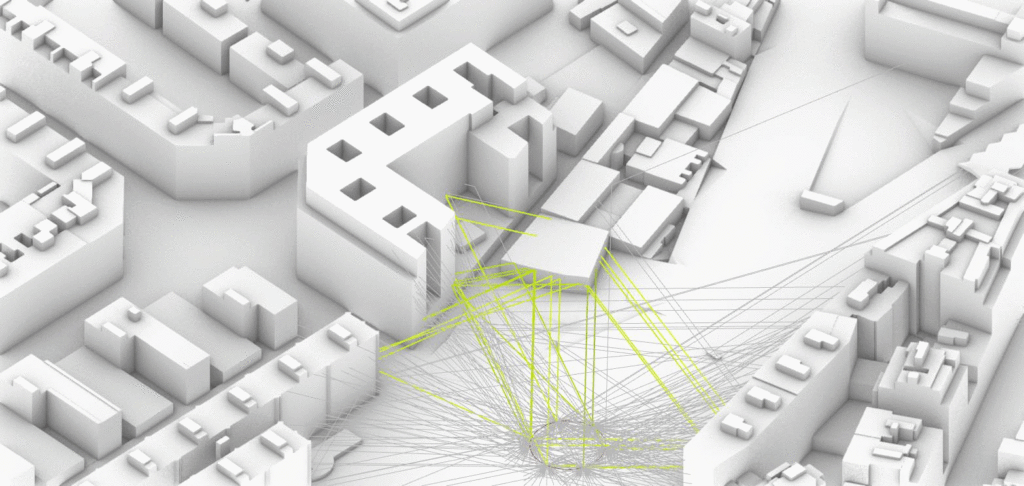
Custom tools were developed to study the site’s surrounding conditions, such as sound pollution. The vehicle noises at the intersection of the busy streets that border the plot indicated the need of certain sound protection for the building.

A sunlight exposure analysis was also performed, given the tall buildings dotting the surroundings. Even in the most disadvantageous day of the year the plot was sufficiently lit throughout the day, except for small areas that would need to be furnished accordingly.
Proliferation
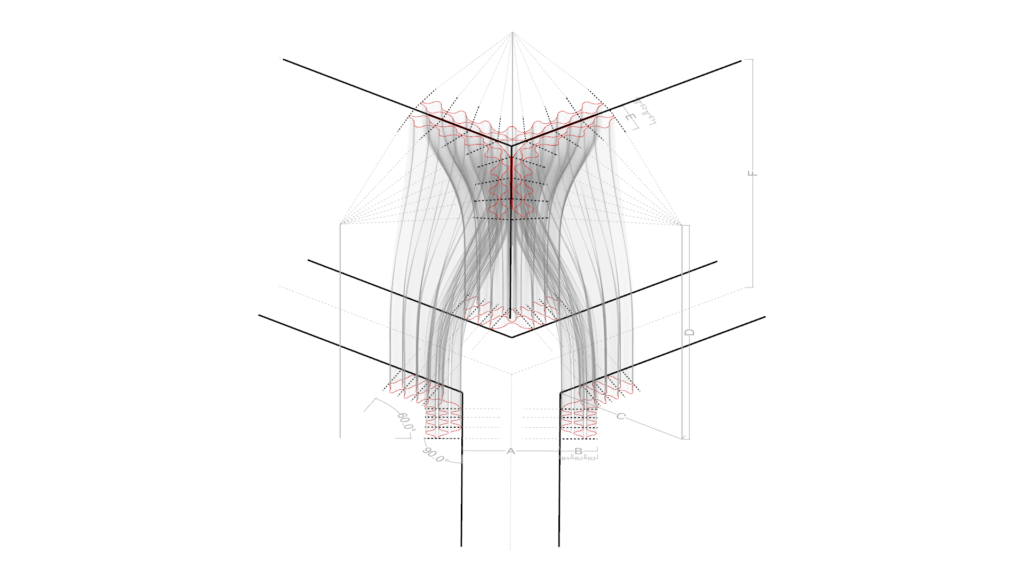
The initial pavilion had a parametric model consisting of three symmetrical generative axes for which input values could be altered: the distance between the base axes (A), the thickness and number of periods at the base (B) and top (E), angle between base lines (C), fiber placement starting point and reaching height (D), and height tip points (F).

The base geometry was further studied to allow greater spans while keeping a reasonable height to each vault. To improve the performance of the required cantilevers, fibers are used to reinforce and prevent the earth from falling over during printing, while in its wet state.
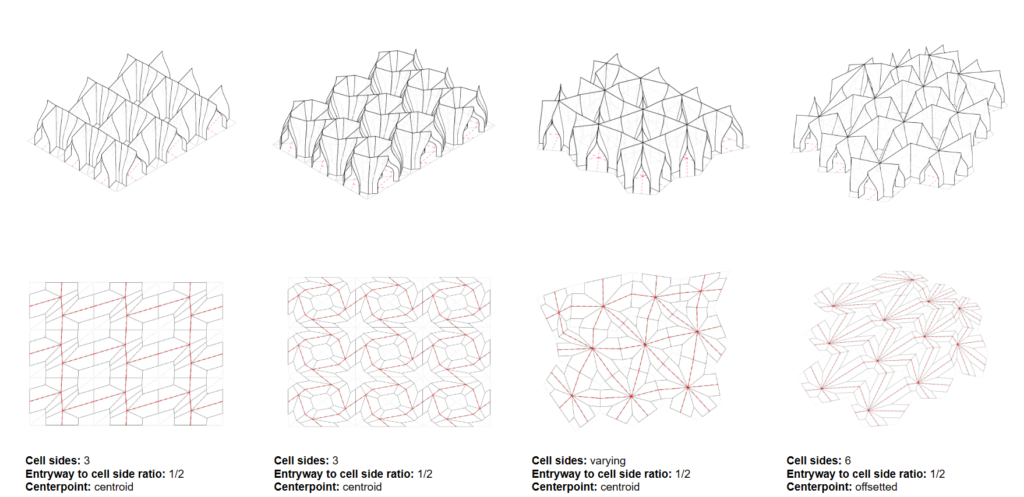
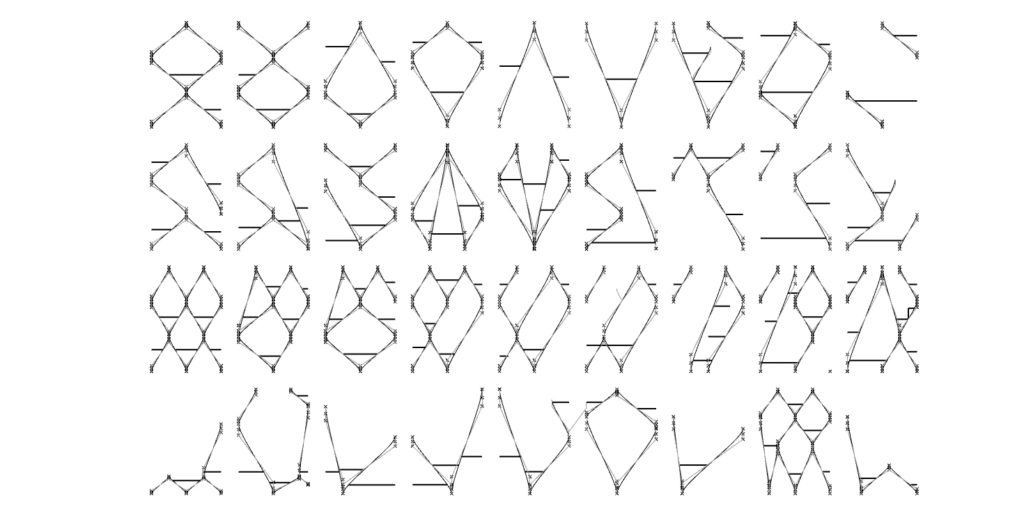
By varying the parameters and generating tessellations in plan and section, the module can be recombined to result in a multitude of spaces with different qualities.
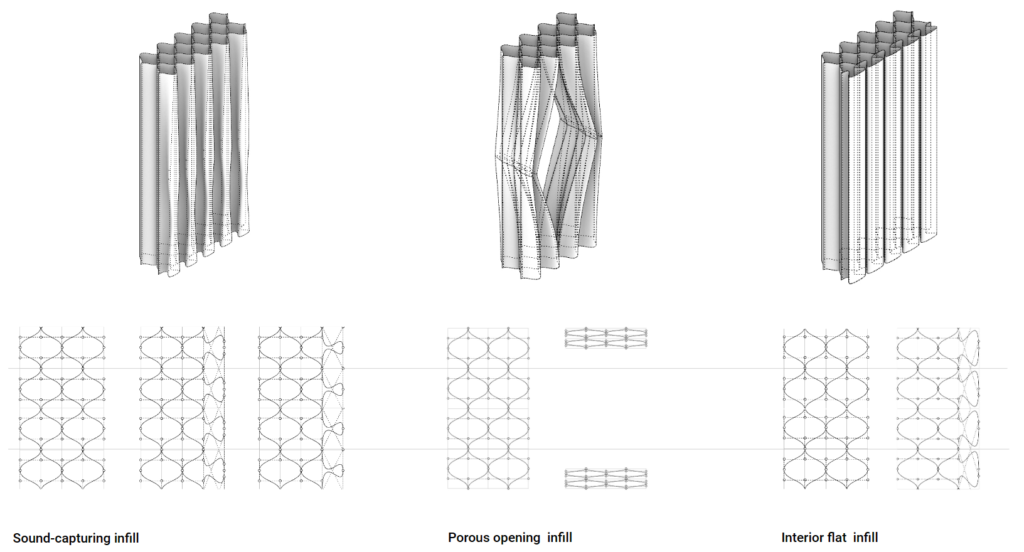
On a detail level, the infills were manipulated to result in walls with sound scattering capabilities for the exterior pollution, porous walls for air and light penetration, as well as flat surfaces to facilitate applying finishes and furnishings in the interior spaces.
This resulting toolkit of geometries and rules was applied in close connection to the chosen site, dictated by a functional schema for the building.
Proposal

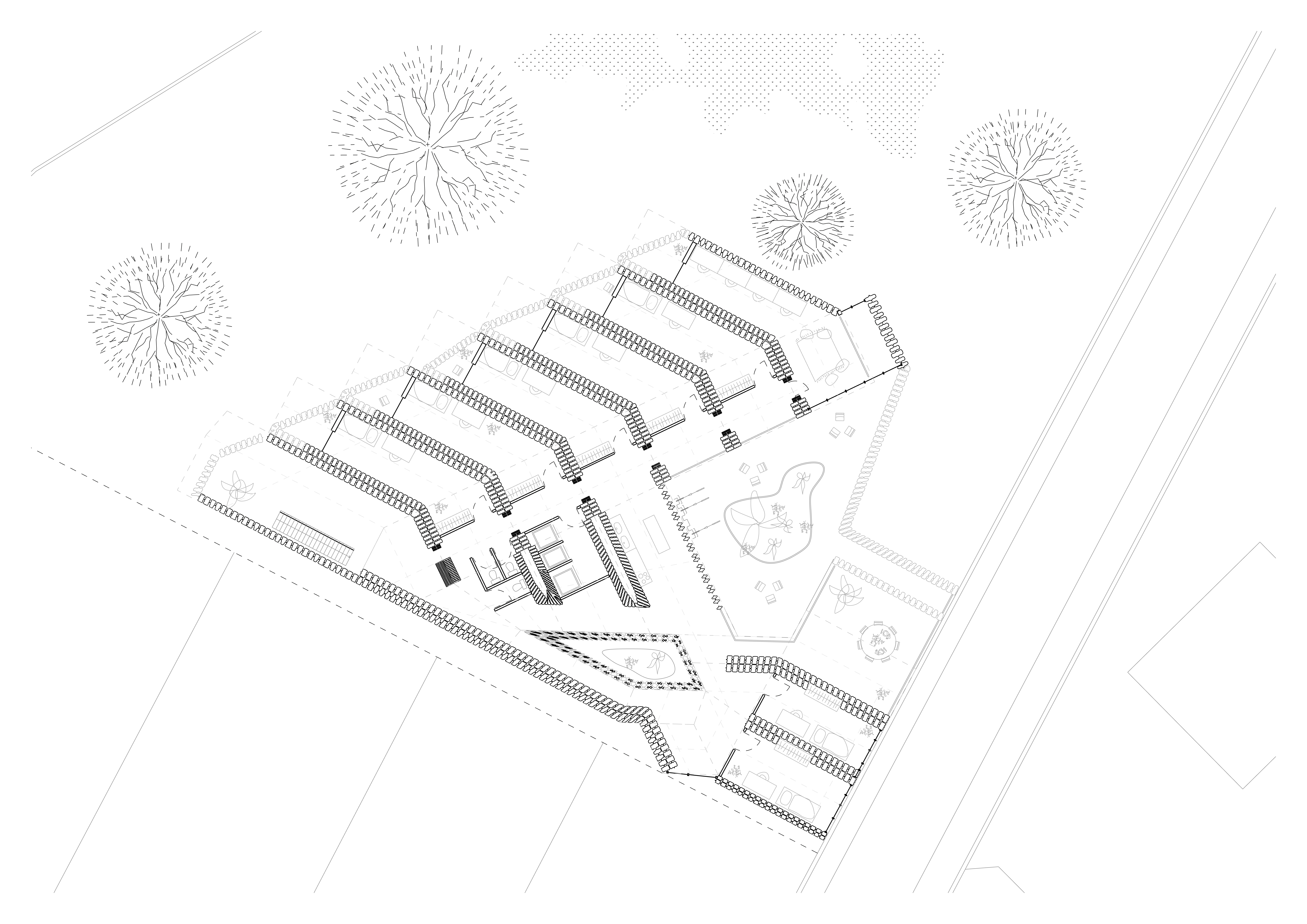

The geometry of the final design is generated by a controlled inclination of the guide surfaces that reaches up to ca. 45°. The proposed student housing facility makes a transition from a private area, considering the minimum amount of covering a living zone, having only one generative axis, spreading to semi-private areas, obtained at an intersection of multiple axes. This results in a final permeable structure, that connects with the surrounding and is informed by it.
